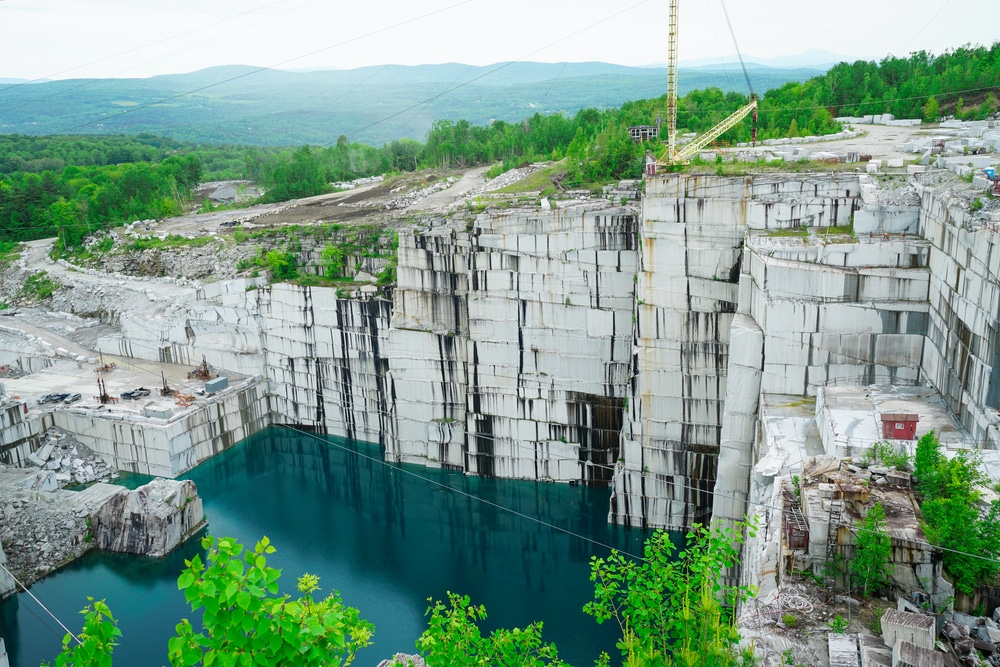Granite Quarries in South Africa Wonders: Checking Out the Quarry Landscape
Granite Quarries in South Africa Wonders: Checking Out the Quarry Landscape
Blog Article
Unearthing the Rich History and Lasting Practices of Granite Quarrying
As we depend on the precipice of discovering the detailed tapestry of granite quarrying, a trip with time discloses not just the physical act of removing rock however likewise the cultural and historical significance woven right into the extremely fabric of this technique. From the ancient origins that laid the foundation for modern quarrying methods to the lasting methods that are forming the future of this sector, each sculpt mark on granite surfaces informs a tale waiting to be unearthed (granite quarries in south africa). The legacy of granite quarrying stretches much past simple removal; it is a testimony to human resourcefulness, durability, and the long-lasting allure of this magnificent rock
Old Origins of Granite Quarrying
Going back to old worlds, the technique of quarrying granite has been an indispensable part of human background and architectural innovation. The earliest evidence of granite quarrying dates back to old Egypt, where massive pyramids and elaborate sculptures were crafted from this sturdy stone. The Egyptians used primitive devices to remove granite blocks from quarries, showcasing the significance of this product in their huge constructions.
Moving ahead in background, the Greeks also made considerable payments to the quarrying of granite. The Greeks made use of granite in various architectural wonders, such as holy places and statues, demonstrating their skill in shaping and sculpting this sturdy rock. The Romans better improved the techniques of quarrying granite, employing innovative devices like chisels and hammers to extract and shape granite for their famous frameworks.
Via the centuries, the technique of quarrying granite has actually progressed, with modern-day innovations enhancing effectiveness while maintaining the timeless charm of this natural stone - granite quarries in south africa. From old civilizations to contemporary building contractors, the legacy of granite quarrying proceeds to form our world
Advancement of Quarrying Techniques
The development of quarrying methods has been marked by a continuous progression in the direction of better performance and accuracy in drawing out granite. From the fundamental techniques utilized by our ancestors to the innovative modern technologies made use of in modern-day quarrying procedures, the sector has actually gone through considerable improvements. Early quarrying techniques involved manual work with fundamental devices such as knives, hammers, and wedges to remove granite blocks from the earth. As worlds progressed, strategies like fire-setting and primitive nitroglycerins were presented to promote the removal process.
In more recent times, the development of machinery changed the quarrying market, enabling quicker extraction rates and increased performance. Technologies such as diamond cord saws, high-pressure water jets, and pneumatic drills have actually ended up being standard in modern-day quarries, enabling for exact cutting and reduced waste. Additionally, developments in computer-controlled devices and 3D modeling have actually enhanced quarrying operations, leading to marginal environmental effect and enhanced sustainability techniques. As the need for granite continues to increase, the advancement of quarrying techniques stays integral to meeting market requires successfully and sustainably.
Social Significance of Granite
Granite holds a profound cultural relevance throughout numerous worlds because of its long-lasting existence in building work of arts and prized monoliths. From the stunning pyramids of Egypt to the complex makings of the Angkor Wat temple in Cambodia, granite has actually been a product of selection for revealing majesty and longevity in cultural heritage. In ancient Rome, granite columns decorated holy places and public structures, representing stamina and permanence. The cultural significance of granite extends beyond its physical attributes; it embodies resilience, stability, and eternity, making it an icon of sustaining legacies and traditions.

Sustainable Practices in Quarrying
Amidst the abundant history of granite quarrying and its cultural importance lies an expanding focus on sustainable practices within the market. As environmental understanding and issues concerning resource exhaustion have enhanced around the world, the quarrying field has significantly accepted sustainable methods to minimize its effect on the setting and surrounding areas.

Furthermore, improvement and recovery of quarry sites post-extraction are important to lasting techniques. By restoring quarried locations to an all-natural or useful state, such as producing wild animals environments or recreational areas, quarriers can balance out the environmental footprint of their procedures and contribute positively to the neighborhood environment.
Legacy of Granite Quarrying
With a historical background steeped in workmanship and commercial progression, Read More Here what enduring impact has granite More Bonuses quarrying left on the landscape of contemporary culture? The tradition of granite quarrying transcends mere extraction techniques; it has formed building wonders, metropolitan landscapes, and social heritage worldwide. The sturdy nature of granite has actually made it a preferred choice for monuments, buildings, and infrastructure, standing as a testament to the skill and virtuosity of quarry employees throughout generations.
In addition, the economic footprint of granite quarrying can not be ignored. The sector proceeds to provide work chances and drive neighborhood economies in areas where granite removal is common. It has also stimulated technological improvements in quarrying techniques and equipment, leading to extra effective and sustainable techniques.
In terms of sustainability, the heritage of granite quarrying includes initiatives to reduce ecological effects via improvement tasks and accountable resource monitoring. By balancing economic passions with environmental stewardship, the sector aims to guarantee that future generations can remain to gain from this enduring natural resource.
Conclusion

Report this page